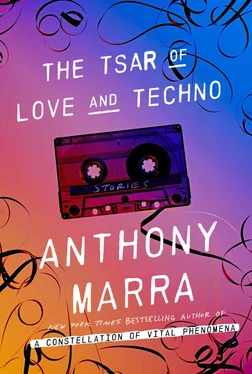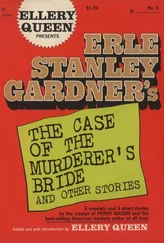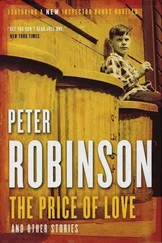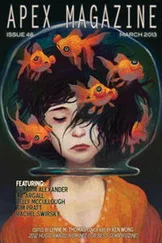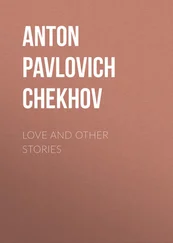I RETURN home after depositing the troika of Chinese oilmen at the Interior Ministry. The street children vanish from the staircase landing as I approach, but leave behind the instruments of their survival: a metal skewer to roast pigeons, a chisel to chip cement from the loose bricks they sell to construction crews for a ruble each.
I knock on the door of the flat adjacent to mine and announce my name. Nadya appears in a headscarf and sunglasses. Turning her unscarred side toward me, she invites me in. “How was the maiden voyage?”
“An excellent success,” I say. “They dozed off before we reached the worst of the wreckage.”
Nadya smiles as she takes measured steps to the Primus stove. She doesn’t need her white cane to reach the counter. I scan the room for impediments but everything is in order. Nothing on the floorboards but the paths of kopek coins I’d glued down so her bare feet could find their way to the bathroom, the kitchen, the front door in her early months of blindness. At the end of one of these paths is a desk neatly stacked with black-and-white photographs, once the subject of her dissertation on altered images in the Stalinist era. I sift through a few while she puts the kettle on. Nadya has circled a single face in each. The same face, or rather, same person is painted into the background of each photograph, from his childhood to his elderly years, the signature of the anonymous censor.
The kettle whistles in the kitchen. We sip tea from mismatched mugs that lift rings of dust from the tabletop. She sits so I can’t see the left side of her face.
“The tourist brochures will be ready next week,” I say. “I’ll have to send one along to our Beijing comrades, if the paintings come out clearly. I’m skeptical of Ossetian printers.”
“You used three from the Zakharov room?”
“Yes, three Zakharovs.”
Her shadow nods on the wall. The Zakharov room, the museum’s largest gallery, had been her favorite too. The first time I ever saw her was in that room, in 1987, her first day working as the museum’s newly hired restoration artist.
“You’ll have to save me one,” she says. “For when I can see it.”
Her last sentence hangs in the air for a long moment before I respond. “I have an envelope with five thousand rubles. For your trip. I’ll leave it on your nightstand.”
“Ruslan, please.”
“St. Petersburg is a city engineered to steal money from tourists. I know. I’m in the industry.”
“You don’t need to take care of me. I keep telling you,” she says with a firm but appreciative squeeze of my fingers. “I’ve been saving my disability allowance. I have enough for the bus ticket and I’m staying with the cousin of a university classmate.”
“It’s not for you. It’s for movies, for videocassettes,” I say, a beat too quickly. Slapstick and romantic comedies have become my favorite genres in recent years. “Find some that are foreign.”
She’s looking straight at me, or at my voice, momentarily forgetting the thing her face has become. She was with me when rockets turned three floors of art into an inferno she barely escaped. The third-degree burns hardened to a crevassed canvas of scar tissue wrapped over the left side of her skull. She might feel with her fingers what had been her face, but she can’t see it, and in that sense her blindness is a gift the fire gave as it took everything else. Her left eye isn’t there. She could point it at the noon sun and it would remain midnight in that bare socket. But her right side was partly spared. There the scar tissue opens onto valleys of smooth skin. In the heat her right eyelids fused together, sealing her eye from the worst of the flames. In it she can at times sense the flicker of light, the faintest movements. There is the possibility, an ophthalmologist told her, that sight could be restored to her right eye. But any optical surgeon clever enough to perform such a delicate operation was clever enough to have fled Grozny long ago. Nadya hasn’t any appointments, but she’ll try to meet with a half-dozen eye surgeons in Petersburg next week. If there is an operation, and if that operation is successful, she says she will move to Sweden. I fear for her future in a country whose citizenry is forced to assemble its own furniture.
“If it happens, the surgery, if it’s successful,” I say. “You don’t need to leave.”
“What I need is sleep.”
When I return to my flat, I scoop the hardened residue of the morning’s kasha onto a slice of round bread. The granules wedge into my molar divots, rough and folically acidic, suggesting the kind of rich, fibrous nutrients that uncoil one’s intestines into a vertical chute. I rinse my hands in the sink and let the water run even after my hands are clean. Indoor plumbing was restored six months ago. Above the doorway hangs a bumper sticker of a fish with WWJCD? inscribed across its body, sent by an American church along with a crate of bibles in response to our plea for life-saving aid.
I take a dozen scorched canvases from the closet and lay them on the floor in two rows of six. They were too damaged for the Tretyakov exhibition. Not one was painted after 1879, and yet they look like the surreal visions of a psychedelic-addled mind. Most are burned through, some no more than mounted ash, more reminiscent of Alberto Burri’s slash-and-burn Tachisme than the Imperial Academy’s classicism. In others the heat-melted oils have turned photo-realistic portraits into dissolved dreamscapes.
My closet holds one last canvas, the Zakharov I rescued. I set it on the coffee table and examine the brushwork by the light of an unshaded lamp. The seamless gradation of color, the nearly invisible brushstrokes; classic Zakharov. Not even the three years I spent writing my dissertation on Pyotr Zakharov-Chechenets could diminish my fascination with his work. Born in 1816, during the Caucasian War that Lermontov, Tolstoy, and Pushkin would later memorialize in their “Prisoner of the Caucasus” story cycle, he was a war orphan before his fourth birthday. Yet his brilliance so exceeded his circumstances that he went on to attend the Imperial Academy of Arts in St. Petersburg and despite exclusion from scholarship, employment, and patronage due to his ethnicity, he eventually became a court painter and a member of the Academy. Here is a Chechen who learned to succeed by the rules of his conquerors, a man not unlike the Interior minister, to be admired and pitied.
A meadow, an apricot tree, a stone wall in a diagonal meander through the grasses, the pasture cresting into a hill, a boarded well, a house. In 1937, the censor who would become the subject of Nadya’s dissertation painted the figure of the Grozny party boss beside the dacha. For more than fifty years the party boss occupied the bottom left corner of the painting like a mislaid statue of Socialist Realism. Soviet dogma had already pervaded the whole of the present, and here was a reminder that the past was no less revisable, no less susceptible to alteration than an unfinished canvas. In 1989, when the Berlin Wall fell and Soviet satellite states began breaking away, when the politicians and security apparatus had more pressing concerns than nineteenth-century landscapes, I asked Nadya to restore the Zakharov. She was well trained, intuitive, a natural restoration artist, and over the course of several weeks, she expunged the party boss from the painting. We didn’t take to the streets; we didn’t overthrow governments or oust leaders; our insurrection was ten centimeters of canvas.
It’s among the least ambitious of all Zakharov’s work. Here is an artist who painted the portraits of Tsar Nicholas I, General Alexei Yermolov, Grand Duchess Maria Nikolaevna, and the famed depiction of Imam Shamil’s surrender, and this, in my hands, portrays all the drama its title suggests: Empty Pasture in Afternoon.
Читать дальше
